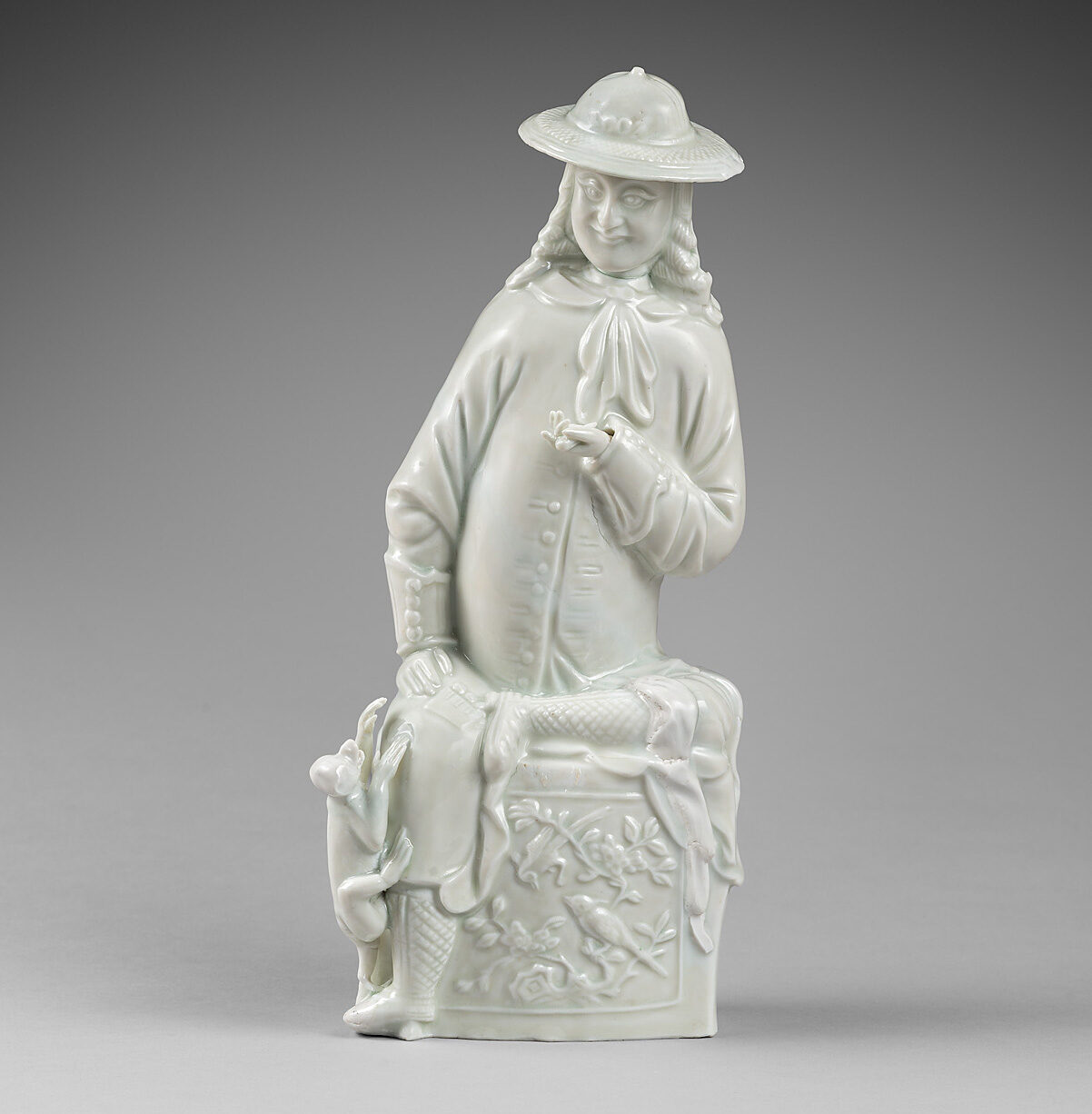Among the more engaging Western-style figures to be produced in Dehua is this porcelain model of a Dutchman seated on a fabric-draped platform decorated with birds and flowers. Enticed by a banana held in the man’s left hand, a monkey climbs up the sitter’s right leg.
